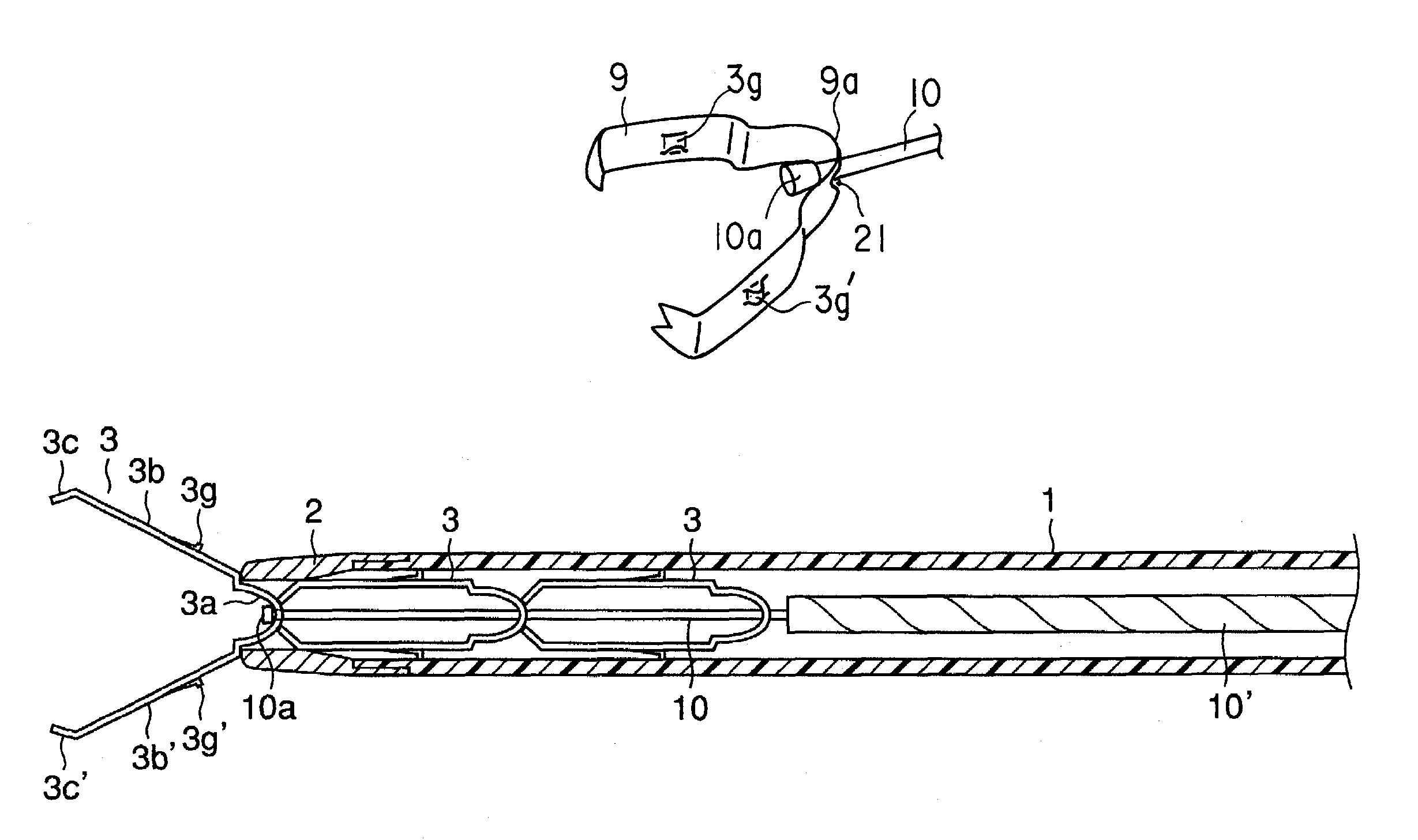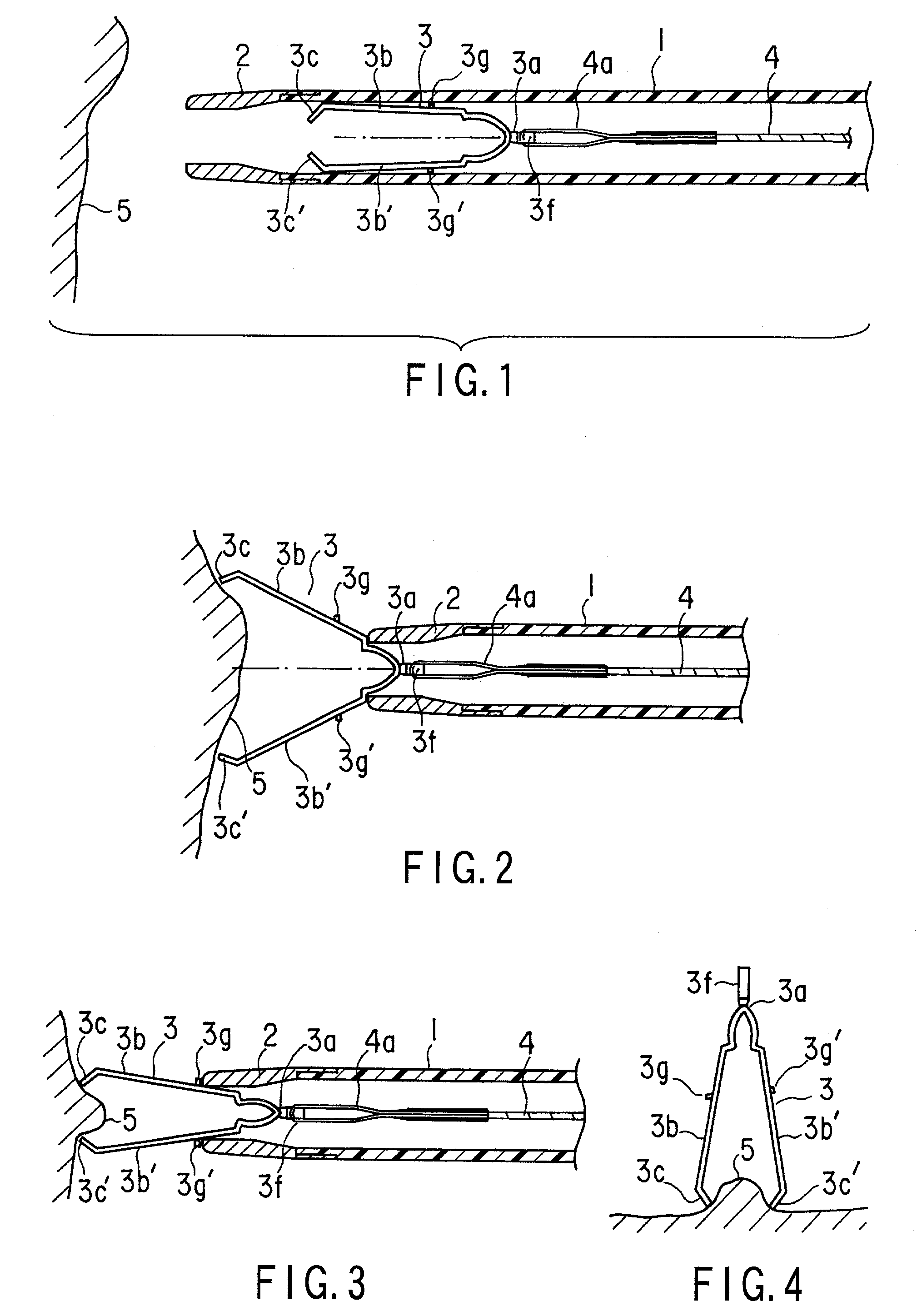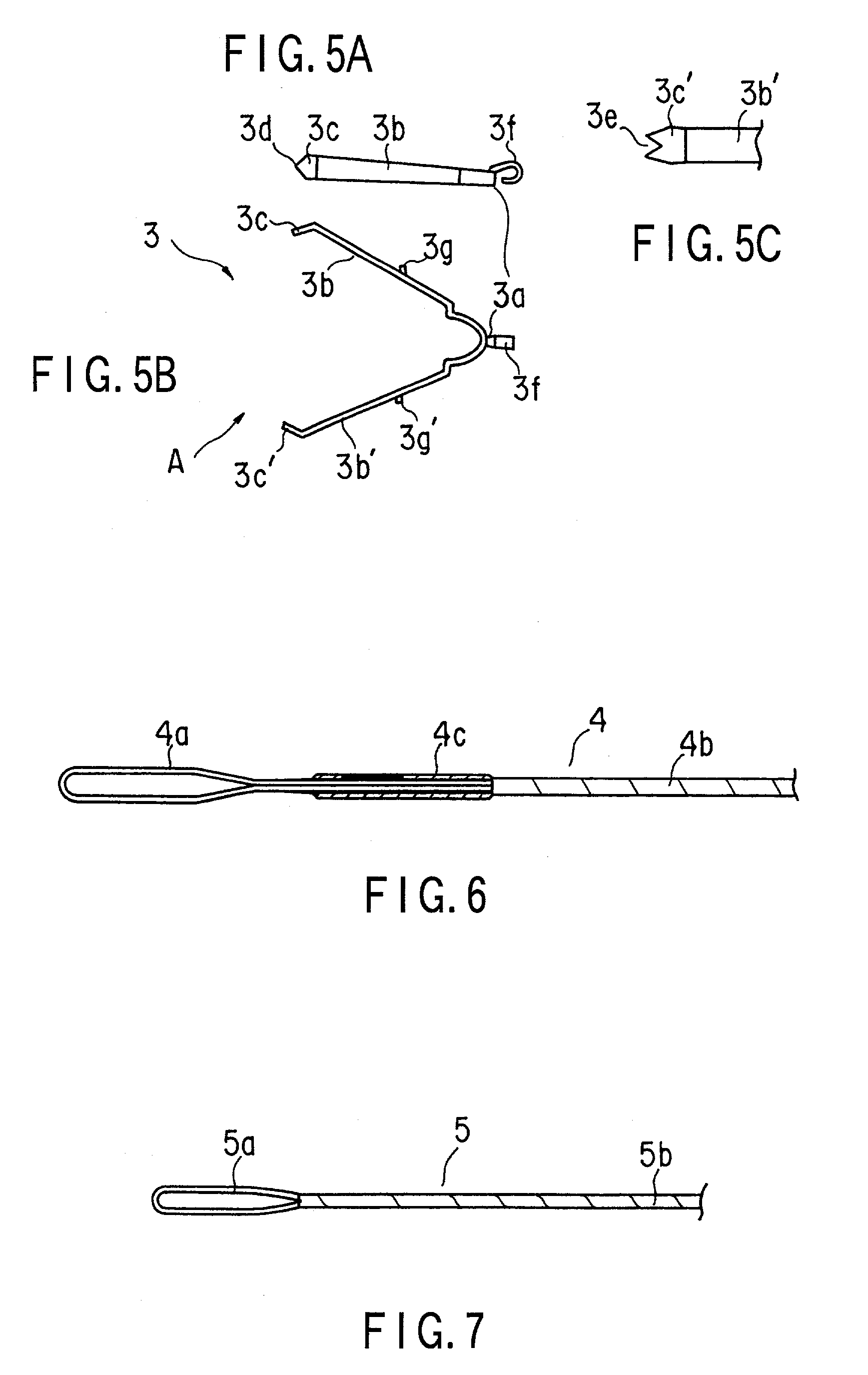Apparatus for ligating living tissues
a technology for living tissues and ligating devices, applied in the field of ligating devices, can solve the problems of increasingrequiring a lot of time, and requiring a large amount of time, and achieves the effects of reducing the number of components, facilitating the manipulation of the attachment clip, and reducing the manufacturing cos
- Summary
- Abstract
- Description
- Claims
- Application Information
AI Technical Summary
Benefits of technology
Problems solved by technology
Method used
Image
Examples
first embodiment
[0057]FIGS. 1 to 6 show a first embodiment, and FIGS. 1 to 3 are longitudinal side views of a tip end in a ligating apparatus. An introducing tube 1 has flexibility such that the tube can be inserted in a channel of an endoscope, and a tip-end chip 2 is disposed in the tip end of the introducing tube 1. The tip-end chip 2 is welded, bonded, or pressed, and fixed to the tip end of the introducing tube 1. A manipulating wire 4 is inserted in the introducing tube 1 in such a manner that the wire can freely advance or retreat, and a clip 3 is disconnectably connected to the tip end of the manipulating wire 4 so that the clip can freely project or retract with respect to the tip end of the introducing tube 1.
[0058]The introducing tube 1 is a coil sheath whose inner and outer surfaces with a metal wire (such as stainless steel) having a circular section closely wound therearound have concaves / convexes. Through such a structure, even when a force for compressing the sheath is applied to th...
second embodiment
[0079]FIGS. 7 and 8A to 8J show a FIG. 7 is a side view of the tip end of the manipulating wire, and FIGS. 8A to 8J show a manufacturing method of the manipulating wire.
[0080]The wire having the closed loop portion in the tip end as described in the first embodiment is known in Jpn. Pat. Appln. KOKAI Publication No. 2000-271146.
[0081]The loop wire forming a closed loop is joined to the tip end of the manipulating wire via a joint pipe. However, in this structure, the joint pipe for joining the manipulating wire to the loop wire is surely required.
[0082]On the other hand, it is already known that the core wire of the twined manipulating wire is used as the loop wire and the closed loop is formed. However, the joint pipe is required for joining the loop wire to the manipulating wire.
[0083]Thereby, the number of components increases, and accordingly the number of assembly steps by the joining manipulating such as welding, bonding, and caulking also increases. Moreover, there is a prob...
fourth embodiment
[0107]The action of the fourth embodiment will next be described.
[0108]When the holding portions 3c, 3c′ are brought close to the target tissue 5, the manipulating wire 4 is drawn. The arm portions 3b, 3b′ of the clip 8 bent in the extending / opening direction engage with the tip end of the tip-end chip 2. Here, when the holding portions 3c, 3c′ are pressed onto the target tissue 5 and the manipulating wire 4 is further drawn, the arm portions 3b, 3b′ of the clip 8 are pulled in the tip-end chip 2, the holding portions 3c, 3c′ are closed, and the target tissue 5 can be held. Furthermore, when the manipulating wire 4 is drawn, the loop wire 4a is ruptured. A force of 1 to 5 kg is applied to the loop wire 4a during ligating with the clip 8. The dimension is set such that the loop wire 4a is ruptured with the application of the force.
[0109]When the loop wire 4a is ruptured, the clip 8 is disengaged from the manipulating wire 4, and the clip 3 can be fastened in the living tissue.
[0110]A...
PUM
 Login to View More
Login to View More Abstract
Description
Claims
Application Information
 Login to View More
Login to View More - R&D
- Intellectual Property
- Life Sciences
- Materials
- Tech Scout
- Unparalleled Data Quality
- Higher Quality Content
- 60% Fewer Hallucinations
Browse by: Latest US Patents, China's latest patents, Technical Efficacy Thesaurus, Application Domain, Technology Topic, Popular Technical Reports.
© 2025 PatSnap. All rights reserved.Legal|Privacy policy|Modern Slavery Act Transparency Statement|Sitemap|About US| Contact US: help@patsnap.com



